orphans
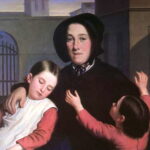 Margaret Haughery was a philanthropist in the New Orleans area. A philanthropist is “a person who seeks to promote the welfare of others, especially by the generous donation of money to good causes.” She was well known as “the mother of the orphans.” Margaret Gaffney Haughery was such a kind and loving person, and in 1880s New Orleans, she was beyond loved. She was so loved that she was known as “Our Margaret,” “The Bread Woman of New Orleans” and “Mother of Orphans.” The reason, Haughery is so loved is that she devoted her life’s work to the care and feeding of the poor and hungry, and to fund and build orphanages throughout the city.
Margaret Haughery was a philanthropist in the New Orleans area. A philanthropist is “a person who seeks to promote the welfare of others, especially by the generous donation of money to good causes.” She was well known as “the mother of the orphans.” Margaret Gaffney Haughery was such a kind and loving person, and in 1880s New Orleans, she was beyond loved. She was so loved that she was known as “Our Margaret,” “The Bread Woman of New Orleans” and “Mother of Orphans.” The reason, Haughery is so loved is that she devoted her life’s work to the care and feeding of the poor and hungry, and to fund and build orphanages throughout the city.
Haughery was an Irish immigrant, and she was also a widow. Haughery held many titles. She was commonly referred to as the “Angel of the Delta,” “Mother Margaret,” “Margaret of New Orleans,” the “Celebrated Margaret,” “Head Mame,” and “Margaret of Tully.” A Catholic, she worked closely with New Orleans Sisters of Charity, associated with the Roman Catholic Archdiocese of New Orleans. Her work was mainly with poor and orphaned widows and kids. She opened four orphanages in the New Orleans area in the 19th century. She didn’t stop there, however. Many years later in the 20th and 21st centuries, several of the asylums Margaret founded as places of shelter for orphans and widows evolved into homes for the elderly.
After her many long years of working with the needy, Haughery, a woman known for her great work in charity, became famed for her lifelong championing of the destitute. Some people considered her a living saint worthy of canonization. Haughery didn’t have a wealthy start. On the contrary, she was born into poverty and orphaned at a young age. She struggled most of her young life. She then began her adult life as a washwoman and a peddler. Nevertheless, she died a businesswoman and philanthropist and received a state funeral. Her life proves what is said in Luke 6:38 in the Bible, “Give, and it will be given to you. Good measure, pressed down, shaken together, running over, will be put into your lap. For with the measure you use it will be measured back to you.” Haughery was an extravagant giver. It doesn’t mean that she gave tons of money, although over the years, she did. Nevertheless, she gave as much as she could, sometimes even more.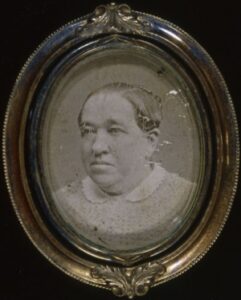
Margaret was born in a stone cottage in Ireland in 1813, the fifth child of William and Margaret O’Rourke Gaffney. The family fell on hard times and the family divided, leaving the three younger children in Ireland with William’s brother. Before long the rest of her family died or, as in the case of her brother, ran off. Haughery was alone and homeless. A Mrs. Richards, who had made the overseas crossing with the Gaffney family heard of Margaret’s plight. She had lost her husband to yellow fever. She took Margaret into her home. There Margaret remained for some years, where she worked for her keep. In fact, she may have been little more than a servant. Margaret received no formal education, and never learned to read or write. When old enough, Margaret went into domestic service, which was common for Irishwomen in Baltimore at that time. While she basically started out with nothing, she received the “kindness” of Mrs Richards and then turned her life around. Margaret went on to show kindness to so many others, and in the end, she became one of the most beloved women in New Orleans.
Margaret married Irish-born Charles Haughery on October 10, 1835, when she was 21 years old. Margaret persuaded him that a change in climate might be therapeutic for his poor health. So, they moved south. They left Baltimore on the ship Hyperion and reached New Orleans on November 20, 1835. Unfortunately, New Orleans was in the middle of yellow fever and cholera epidemics. For a time, Charles’ health showed a slight improvement, but it was short-lived and medical advice recommended a sea journey. In desperation, Charles decided to go to Ireland, which was his native land. The trip had to be delayed for several months pending the birth of the couple’s first child, a girl named Frances. Eventually, Charles made the voyage but after some months Margaret received word that he died shortly after reaching his destination. A short time later, Frances became seriously ill and died. Once again, Margaret’s family was wiped out, and she was just 23 years old. At this point, Margaret Haughery could have given up in despair, but she didn’t. She turned her life around and became one of the most beloved women in New Orleans.
In her will Margaret left everything to charities, without distinction of religion, for widows, orphans, and the  elderly. She left all her wealth to charities with the exception of the bakery, which she bequeathed to her foster son, Bernard Klotz. According to her will, the rest of her wealth. When Margaret died and her will was read, with all her giving, she had still saved a great deal of money. She somehow had given so much, and still had more to give. She left every cent of it to the different orphan asylums of the city. Each orphanage was given something, whether they were for white children or black, for Jews, Catholics, or Protestants, made no difference. Margaret always said, “They are all orphans alike.” Margaret signed her will with a cross instead of a name as she never learned to read or write. Her signature, a reminder of her humble beginnings, great business successes, and mark on humanity, despite being unable to read or write.
elderly. She left all her wealth to charities with the exception of the bakery, which she bequeathed to her foster son, Bernard Klotz. According to her will, the rest of her wealth. When Margaret died and her will was read, with all her giving, she had still saved a great deal of money. She somehow had given so much, and still had more to give. She left every cent of it to the different orphan asylums of the city. Each orphanage was given something, whether they were for white children or black, for Jews, Catholics, or Protestants, made no difference. Margaret always said, “They are all orphans alike.” Margaret signed her will with a cross instead of a name as she never learned to read or write. Her signature, a reminder of her humble beginnings, great business successes, and mark on humanity, despite being unable to read or write.
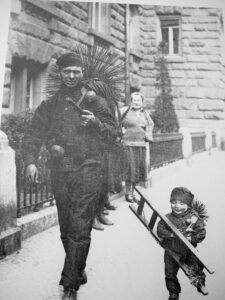
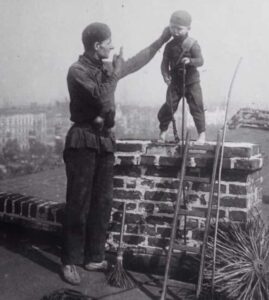 Perhaps one of the most questionable of all professions undertaken by children in the past was that of chimney sweeping. Not only were children exploited in this job, mostly because of their small stature, but since proper safety measures were not taken in those days, the children in those jobs had health problems for the rest of their lives, and very likely they died young. The use of children as chimney sweeps began in the late 1600s in England, after the Great Fire of London, which gutted the city. At that time, building codes changed, requiring chimneys to be much narrower than they were previously. The idea was to keep more of the sparks in than out.
Perhaps one of the most questionable of all professions undertaken by children in the past was that of chimney sweeping. Not only were children exploited in this job, mostly because of their small stature, but since proper safety measures were not taken in those days, the children in those jobs had health problems for the rest of their lives, and very likely they died young. The use of children as chimney sweeps began in the late 1600s in England, after the Great Fire of London, which gutted the city. At that time, building codes changed, requiring chimneys to be much narrower than they were previously. The idea was to keep more of the sparks in than out.
The new design brought with it a bigger problem…keeping the chimneys free of obstruction, which became more of a challenge and a priority. Amazingly, instead of someone inventing a tool for this purpose, children were employed as human chimney sweeps. Their small stature allowed them to go inside the chimneys and manually sweep away the soot. Thus practice went on for over 200 years, in spite of the deplorable conditions the children lived in, the horrible health effects they suffered, and the many injuries and fatalities resulting from related work hazards.
One former chimney sweep, James Seaward was interviewed in December 1909, by the Toronto Saturday Night, a Canadian publication. Seaward was living in Wokingham, where he had just been named alderman of the town’s Borough Council. Seaward was one of the fortunate few that were still alive after working as a chimney sweep for 58 years. He started when he was just six. Seaward tells how he “was only six years old when I went up my first chimney. I was an orphan and I fell into the hands of a chimney sweep, and a cruel master he was. I have known what it was to have straw lighted under me and pins stuck into the soles of my feet to force me up a chimney; and I have known, too, what it was to come down covered with blood and soot after climbing with my knees and elbows. No one knows the terrible cruelty inflicted on boys in those days. 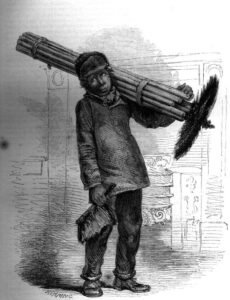
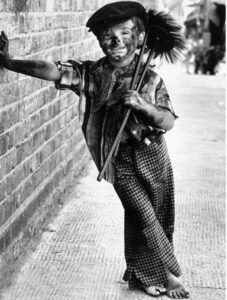 They used to be steeped in strong brine to harden their flesh. In my own case soda was used. Sometimes I used to have to stay up a difficult chimney five or six hours at a stretch.”
They used to be steeped in strong brine to harden their flesh. In my own case soda was used. Sometimes I used to have to stay up a difficult chimney five or six hours at a stretch.”
Somehow, Seaward managed to survive, and to actually prosper, even is such deplorable conditions. Thankfully, such cruelty was outlawed during the nineteenth century, with laws introduced regarding child labor. Those laws didn’t address chimney sweeps specifically, but rather child labor in general. The things that were allowed in the past concerning child labor were just awful, and orphans were specifically targeted, because they had little protections over their lives. They were often “adopted” out, but their “new parents” sometimes just wanted slave labor.
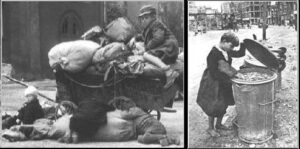 Wars leave unfortunate consequences, one of the biggest being orphaned children. World War II is no exception to that rule. After the surrender of Germany, the nation was basically split into four sections…the American Zone, the Soviet Zone, the British Zone, and the French Zone. It was all part of the denazification process. The term denazification refers to the removal of the physical symbols of the Nazi regime. In 1957 the West German government re-issued World War II Iron Cross medals, among other decorations, without the swastika in the center. That was just one of the ways that the Nazi regime was removed from Germany.
Wars leave unfortunate consequences, one of the biggest being orphaned children. World War II is no exception to that rule. After the surrender of Germany, the nation was basically split into four sections…the American Zone, the Soviet Zone, the British Zone, and the French Zone. It was all part of the denazification process. The term denazification refers to the removal of the physical symbols of the Nazi regime. In 1957 the West German government re-issued World War II Iron Cross medals, among other decorations, without the swastika in the center. That was just one of the ways that the Nazi regime was removed from Germany.
Another way was the Denazified School System and the denazification of the rest of the German government…which was then reassembled without the Nazi symbolism. With the school system effectively out of commission, the children of Berlin had very little or even no structure in their lives at all. These were children whose lives had been shredded by the war, many of whom had been orphaned by the conflict or had lost at least one parent. That lead to an overall lack of adult supervisors. Children, and especially teens and preteens, roamed the streets in packs. The situation was especially difficult for the children who had lost both parents. There weren’t any real orphanages either, and so these children formed their own “families” on the streets…like street gangs. These children were known as German “wolf children” also known as “Wolfskinder,” but the reality was that they were simply the forgotten orphans of World War II.
The schools eventually reopened, but they were often in half-ruined facilities, that were underfunded and understaffed, with some schools reporting student-to-faculty ratios of 89 to 1. That kind of a classroom ratio is far too big to be able to effectively teach the students. And the re-opened schools didn’t really address the issue of these orphaned “wolf children” who were often in hiding whenever authorities were around. These children were most likely afraid of authority, because it was the authorities who got their parents killed in the first place. Many of these children were forced to flee what was then East Prussia to Lithuania at the end of World War II. They felt like the German government had failed them. These children survived hunger, cold, and the loss of their identity, and the German government had long overlooked them, so why would they trust the government now.
No one really knows just how many “wolf children” there were. That number can only be estimated. Some say there were up to 25,000 of them roaming the woods and swamps of East Prussia and Lithuania after 1945. Russians were actually forbidden from taking in these “fascist children.” These children were actually told to go to Lithuania and given the promise that there would be food there. When they arrived, they couldn’t speak the language and they had no papers, so they had no identity…no one could even know their names. Those who were taken in often had every shred of memorabilia from their past stripped from them and tossed in the trash. That was the last part of who they really were. It was the price they would pay for food, safety, and security; and it was a failure of the German government, and the four nations who were in charge of reorganizing Germany. I suppose some would disagree with me on that note, but the reality is plain to see. If these children came across kind locals, the “Vokietukai” or little Germans, in Lithuanian, as they were known, were helped with buckets of soup in front of the doors, giving the children a little nourishment. If the residents were not so kind, they would set their dogs on the children.
While the “Vokietukai” had many struggles in Lithuania, life was still better than the fate that awaited the 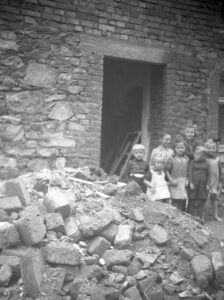
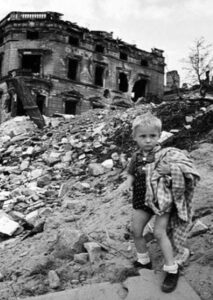 children who were too weak to make it to the Baltic states. There were thousands of these children, and they were sent to Soviet homes run by the military administration. That was the fate of approximately 4,700 German children in 1947, according to historian Ruth Leiserowitz, who has researched the fates of wolf children. Later that year, many of them were sent to the Soviet occupation zone. That zone later became the German Democratic Republic (GDR). Those poor children traveled in freight trains without any straw to sleep on…similar the Holocaust deportation years. These children were young…between 2 and 16 years of age. They arrived in East Germany after four days and four nights…really more dead than alive. There, they were put in orphanages or adopted by avid Communists. They never really escaped Communism…and that is the saddest part of all.
children who were too weak to make it to the Baltic states. There were thousands of these children, and they were sent to Soviet homes run by the military administration. That was the fate of approximately 4,700 German children in 1947, according to historian Ruth Leiserowitz, who has researched the fates of wolf children. Later that year, many of them were sent to the Soviet occupation zone. That zone later became the German Democratic Republic (GDR). Those poor children traveled in freight trains without any straw to sleep on…similar the Holocaust deportation years. These children were young…between 2 and 16 years of age. They arrived in East Germany after four days and four nights…really more dead than alive. There, they were put in orphanages or adopted by avid Communists. They never really escaped Communism…and that is the saddest part of all.
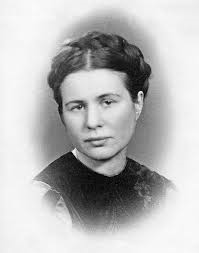 Some would consider the actions of Irena Sendler a crime, while others would consider them heroic. I suppose it was a crime, at the time it happened…a crime of opportunity, because her actions were illegal, but how could she had done anything different? Irena Sendler was born in Otwock, Poland, on February 15, 1910, to Stanislaw Henryk Krzyzanowski, a physician, and his wife, Janina Karolina Grzybowska Krzyzanowski. Irena grew up there in Otwock, a town about 15 miles southeast of Warsaw, where there was a Jewish community. Her father was a kind man who treated the very poor, including Jews, free of charge. Stanislaw died in February 1917 after he contracted typhus from his patients. After his death, the Jewish community offered financial help for the widow and her daughter, though Janina Krzyzanowski declined their assistance. I’m sure she knew they really didn’t have the money to help, but offered because of her husband.
Some would consider the actions of Irena Sendler a crime, while others would consider them heroic. I suppose it was a crime, at the time it happened…a crime of opportunity, because her actions were illegal, but how could she had done anything different? Irena Sendler was born in Otwock, Poland, on February 15, 1910, to Stanislaw Henryk Krzyzanowski, a physician, and his wife, Janina Karolina Grzybowska Krzyzanowski. Irena grew up there in Otwock, a town about 15 miles southeast of Warsaw, where there was a Jewish community. Her father was a kind man who treated the very poor, including Jews, free of charge. Stanislaw died in February 1917 after he contracted typhus from his patients. After his death, the Jewish community offered financial help for the widow and her daughter, though Janina Krzyzanowski declined their assistance. I’m sure she knew they really didn’t have the money to help, but offered because of her husband.
In 1931, Irena married Mieczyslaw Sendler, and the couple moved to Warsaw before the outbreak of World War II. The couple divorced in 1947. Irena then married Stefan Zgrzembski. They had three children, Janina, Andrzej (who died in infancy), and Adam (who died of heart failure in 1999). Then, they divorced in 1957. She remarried Mieczyslaw Sendler in 1961, but they divorced again in 1971. In college, Irena 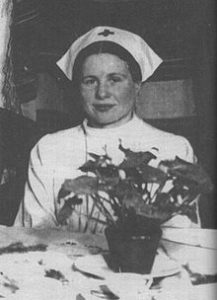 had studied to became a social worker, and she remembered the lessons of her father…to show kindness to others. It was a life lesson that would prove useful in Irena’s future.
had studied to became a social worker, and she remembered the lessons of her father…to show kindness to others. It was a life lesson that would prove useful in Irena’s future.
When the Nazis invaded Poland in 1939, Irena had access to the Warsaw Ghetto through her job. The ghetto was where hundreds of thousands of Jews were imprisoned. The situation there appalled her. Irena became a member of the Council to Aid Jews, and worked as a social worker, overseeing the city’s canteens, which provided assistance to people in need. After the Nazi invasion, Irena and her colleagues also used the canteens to provide medicine, clothing and other necessities to the city’s persecuted Jewish population. Her actions enabled her to help rescue 2,500 Jewish children from the ghetto. The group had several ways of smuggling the children out of the ghetto. Some were carried out in caskets or potato sacks, while others left in ambulances or snuck out through underground tunnels. Still others entered the Jewish side of a Catholic church that straddled the ghetto boundary and left on the other side with new identities. Irena then helped place the children at convents or with non-Jewish families. The operation was run with clockwork-like precision. As the situation grew worse for the ghetto’s inhabitants, Irena went beyond rescuing orphans and began asking parents to let her try to get their children to safety. Although she couldn’t guarantee the children’s survival, she could tell parents that their children would at least have a chance. The parents knew that it would be their 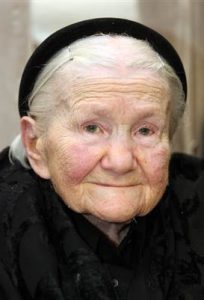 children’s only chance. Irena kept detailed records and lists of the children she helped buried in a jar. She planned to reunite the rescued children and their parents after the war. Unfortunately, most of the parents did not survive.
children’s only chance. Irena kept detailed records and lists of the children she helped buried in a jar. She planned to reunite the rescued children and their parents after the war. Unfortunately, most of the parents did not survive.
On October 20, 1943, the Nazis arrested Irena and sent her to Pawiak Prison. She was tortured in an attempt to get her to reveal the names of her associates. She refused and was sentenced to death. However, Council to Aid Jews members bribed the prison guards, and Irena was released in February 1944. Irena continued her work until the war ended, by which time she and her colleagues had rescued approximately 2,500 children. It has been estimated that Irena personally saved about 400 children. In 1965, Irena was honored for her courageous actions during the Holocaust. She was given Israel’s Yad Vashem to honor her as “Righteous Among the Nations.” Irena died in Warsaw, Poland on May 12, 2008, at the age of 98.
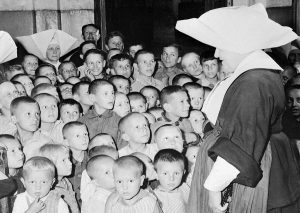 During the years of World War II, so much destruction brought with it the loss of jobs and homes. Along with the loss of jobs came poverty for many people. The smallest necessity became a “luxury” to people who had no problem making a living before. Many children were caught in the post-war poverty, because they lost their parents in the war. The orphanages were filled with children who were still in a daze, and trying to learn to be pretty much on their own, while still under the supervision of the state. I can only imagine how these little ones must have felt. Their parents were gone, they were grieving, and they were tossed into a strange building with many other children, all in the same boat. I’m sure the people running the orphanage did their best to comfort the children, but there were just so many of them.
During the years of World War II, so much destruction brought with it the loss of jobs and homes. Along with the loss of jobs came poverty for many people. The smallest necessity became a “luxury” to people who had no problem making a living before. Many children were caught in the post-war poverty, because they lost their parents in the war. The orphanages were filled with children who were still in a daze, and trying to learn to be pretty much on their own, while still under the supervision of the state. I can only imagine how these little ones must have felt. Their parents were gone, they were grieving, and they were tossed into a strange building with many other children, all in the same boat. I’m sure the people running the orphanage did their best to comfort the children, but there were just so many of them.
I’m sure that joy was stranger to most of the children. And I’m sure that the people who cared for them were looking for any way to put a smile on the faces of the children. Little did they know, how such a small thing as shoes, could change everything. They found out, when the Junior Red Cross in the United States of America put together boxes of what most of us would consider necessities to give to the children in Europe.
One six year old Austrian boy named Werfel, was photographed when he got a new pair of shoes at the Am Himmel orphanage, donated to him in the Christmastime care box. The picture taken of little Werfel, was enough to bring tears to the eyes of anyone who saw it. They may have been happy tears, but they were highly emotional tears nevertheless. Most kids these days, would be almost disappointed to receive a pair o shoes as 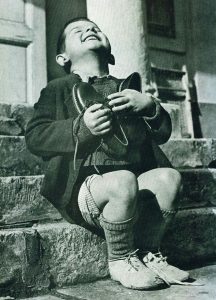 a gift…unless they were the latest in cool shoes. Little Werfel was beyond happy. He held the shoes to his chest and looked to the sky, as I he couldn’t possibly contain his happiness. The photographer probably took the picture through tear filled eyes. I know that’s what I would have done as the photographer. It was impossible not to be filled with emotion. “The photograph was first published in LIFE magazine on December 30, 1946 (on page 22) and later, again, on September 24, 1951 (on page 180). The photograph was shot by Gerald Waller, in 1946, and was titled “New Shoes”. The little boy, Werfel, was among the children who were brought to the USA after being deported from Israel / Palestine, where they arrived after liberation from the concentration camps. The image was published with the following caption in the 1946 issue. “EUROPE’S CHILDREN – Christmas brings joy and sadness.”
a gift…unless they were the latest in cool shoes. Little Werfel was beyond happy. He held the shoes to his chest and looked to the sky, as I he couldn’t possibly contain his happiness. The photographer probably took the picture through tear filled eyes. I know that’s what I would have done as the photographer. It was impossible not to be filled with emotion. “The photograph was first published in LIFE magazine on December 30, 1946 (on page 22) and later, again, on September 24, 1951 (on page 180). The photograph was shot by Gerald Waller, in 1946, and was titled “New Shoes”. The little boy, Werfel, was among the children who were brought to the USA after being deported from Israel / Palestine, where they arrived after liberation from the concentration camps. The image was published with the following caption in the 1946 issue. “EUROPE’S CHILDREN – Christmas brings joy and sadness.”
It was said that, “For many of Europe’s children there was a Santa Claus this Christmas. When a big box from the American Red Cross arrived at Vienna’s Am Himmel orphanage, shoes and coats and dresses tumbled out. Like the youngster (in the picture), the children who had seen no new clothes throughout the war smiled to high heaven. But for thousands of other European children there was no Santa Claus. When a boatload of illegal Jewish immigrants arrived at Haifa, Palestine recently, two Polish children (opposite) got separated from their parents. Tears filled the eyes of the boy, and his wan sister clutched him protectively. They were later reunited with their parents, but the whole family was shipped to Cyprus.”
The picture has stayed in my memory since the first time I saw it. To see that little boy so overjoyed…over shoes, was so beautiful. The photographer caught the picture perfectly. That moment was very likely one of the first truly happy moments that little boy had felt in quite some time. An adult, no matter the need would never 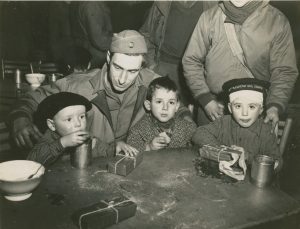 have shown such deep joy, probably because they would still be wrapped up in the poverty of the time, while the child was able to look beyond all that,and see the pure joy of the gift. The child could simply enjoy and cherish what has just been given to him, even though he was living in an orphanage…even though historical events had just unfolded,robbing him of his comfortable life…even though these were hand-me-downs. It made no difference to this boy, and it reminds us of how flawed our thinking is. We tend to look at the negatives in life and focus on them. Not this boy. He was happy with the tiniest positive thing that came into his life. It’s a lesson we should all learn. Sometimes we all need to appreciate the little things in life.
have shown such deep joy, probably because they would still be wrapped up in the poverty of the time, while the child was able to look beyond all that,and see the pure joy of the gift. The child could simply enjoy and cherish what has just been given to him, even though he was living in an orphanage…even though historical events had just unfolded,robbing him of his comfortable life…even though these were hand-me-downs. It made no difference to this boy, and it reminds us of how flawed our thinking is. We tend to look at the negatives in life and focus on them. Not this boy. He was happy with the tiniest positive thing that came into his life. It’s a lesson we should all learn. Sometimes we all need to appreciate the little things in life.
 During the Vietnam War, as in any war, children can become displaced because of the loss of their parents. The country has already lost so many people, and often there is no one to take these little orphans, so they often end up in an orphanage, waiting for someone to come along and adopt them. Many times, they live their entire childhood in that orphanage. For a country that has already be devastated by war, the cost of raising these children is detrimental. Such was the case for orphaned children from the Vietnam War. Then the United States made the decision to airlift these children to the United States to be adopted by American families who were waiting for children. The plan was dubbed Operation Baby Lift, and while it would end up being successful, it got of the a sad and rocky start on April 4, 1975, when the first plane crashed shortly after taking off from Tan Son Nhut airbase in Saigon. On board were more than 300 passengers. Of those, 138 passengers, mostly children were killed.
During the Vietnam War, as in any war, children can become displaced because of the loss of their parents. The country has already lost so many people, and often there is no one to take these little orphans, so they often end up in an orphanage, waiting for someone to come along and adopt them. Many times, they live their entire childhood in that orphanage. For a country that has already be devastated by war, the cost of raising these children is detrimental. Such was the case for orphaned children from the Vietnam War. Then the United States made the decision to airlift these children to the United States to be adopted by American families who were waiting for children. The plan was dubbed Operation Baby Lift, and while it would end up being successful, it got of the a sad and rocky start on April 4, 1975, when the first plane crashed shortly after taking off from Tan Son Nhut airbase in Saigon. On board were more than 300 passengers. Of those, 138 passengers, mostly children were killed.
Captain Dennis “Bud” Traynor was the captain on the plane. Many of the 138 passengers were children, and 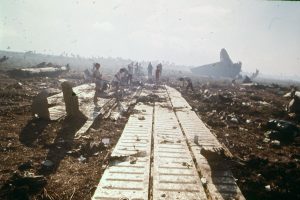 many of them were under age 2 and so small, they had to be carried onto the plane. “We bucket-brigade-loaded the children right up the stairs into the airplane,” Traynor remembers. The flight began normally, but shortly into the flight, when the plane’s cargo doors malfunctioned they blew out, taking with them a chunk of the tail. There was a rapid decompression inside the aircraft, causing the pilot, Traynor, to crash land the C-5 cargo plane into a nearby rice paddy. Traynor managed to stabilize the plane and turn it back toward Vietnam. After that, his only option was a crash landing. The impact was fierce. “It cut all control cables to the tail,” explains Traynor. “So I’m pulling and pulling and pulling, and my nose is going down further and further and we’re going faster and faster and faster, and I can’t figure this out. We came to a stop and I thought to myself ‘I’m alive,'” he says. “And so I undid my lap belt, fell to the ceiling, rolled open the side window, and stepped out and saw the wings burning. And I thought, ‘Oh no, that’s the rest of the airplane.'” Out of the more than 300 people on board, the death toll included 78 children and about 50 adults, including Air Force personnel. More than 170 survived.
many of them were under age 2 and so small, they had to be carried onto the plane. “We bucket-brigade-loaded the children right up the stairs into the airplane,” Traynor remembers. The flight began normally, but shortly into the flight, when the plane’s cargo doors malfunctioned they blew out, taking with them a chunk of the tail. There was a rapid decompression inside the aircraft, causing the pilot, Traynor, to crash land the C-5 cargo plane into a nearby rice paddy. Traynor managed to stabilize the plane and turn it back toward Vietnam. After that, his only option was a crash landing. The impact was fierce. “It cut all control cables to the tail,” explains Traynor. “So I’m pulling and pulling and pulling, and my nose is going down further and further and we’re going faster and faster and faster, and I can’t figure this out. We came to a stop and I thought to myself ‘I’m alive,'” he says. “And so I undid my lap belt, fell to the ceiling, rolled open the side window, and stepped out and saw the wings burning. And I thought, ‘Oh no, that’s the rest of the airplane.'” Out of the more than 300 people on board, the death toll included 78 children and about 50 adults, including Air Force personnel. More than 170 survived.
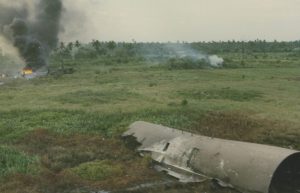 While it was an unusual plan, hatched in the midst of the political fallout, the United States government announced the plan to get thousands of displaced Vietnamese children out of the country. President Ford directed that money from a special foreign aid children’s fund be made available to fly 2,000 South Vietnamese orphans to the United States. Operation Baby Lift lasted for just ten days. Baby Lift was carried out during the final, desperate phase of the war, as North Vietnamese forces closed in on Saigon. Although this first flight ended in tragedy, the rest of the flights were completed safely, and Baby Lift aircraft brought orphans across the Pacific until the mission’s conclusion on April 14, just 16 days before the fall of Saigon and the end of the war.
While it was an unusual plan, hatched in the midst of the political fallout, the United States government announced the plan to get thousands of displaced Vietnamese children out of the country. President Ford directed that money from a special foreign aid children’s fund be made available to fly 2,000 South Vietnamese orphans to the United States. Operation Baby Lift lasted for just ten days. Baby Lift was carried out during the final, desperate phase of the war, as North Vietnamese forces closed in on Saigon. Although this first flight ended in tragedy, the rest of the flights were completed safely, and Baby Lift aircraft brought orphans across the Pacific until the mission’s conclusion on April 14, just 16 days before the fall of Saigon and the end of the war.
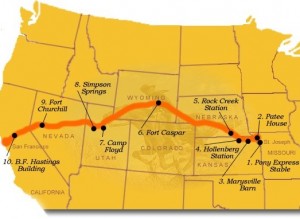 I often wonder how it must have felt to live in a time when so many things were changing in ways that man had not seen before. Things like the automobile, the airplane, the light bulb, the telephone, and the telegraph, all came into being between the 1800s and the early 1900s. Prior to these things, our world was rather primitive concerning things like travel, communication, and even the home life…at least by today’s standards, anyway.
I often wonder how it must have felt to live in a time when so many things were changing in ways that man had not seen before. Things like the automobile, the airplane, the light bulb, the telephone, and the telegraph, all came into being between the 1800s and the early 1900s. Prior to these things, our world was rather primitive concerning things like travel, communication, and even the home life…at least by today’s standards, anyway.
When families began moving West to find land and adventure, it was often a very sad time, because many of these people would not see their loved ones again. They might not even hear from them. This really seemed like an unacceptable situation for most of the people on both sides of that spectrum. The people needed to hear from their loved ones, and so like every other idea, from necessity came a solution…the Pony Express. Prior to the Pony Express, people might try to send a letter with a wagon train heading West to see of they could manage 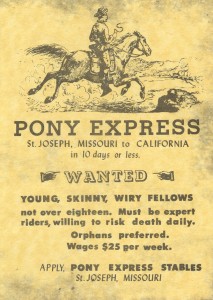 to get it to a loved one who had left a year or more before. Imagine the impossibility of that feat. The person with whom the letter was sent, might not even know the person to whom the letter was being sent. It meant asking around in the area they had planned to settle in, and if they had moved elsewhere…well that is the real definition of the dead letter.
to get it to a loved one who had left a year or more before. Imagine the impossibility of that feat. The person with whom the letter was sent, might not even know the person to whom the letter was being sent. It meant asking around in the area they had planned to settle in, and if they had moved elsewhere…well that is the real definition of the dead letter.
The Pony Express became the first dedicated postal service ever, on this day, April 3, 1860, but it was a far cry from the mail service of today, about which many of us complain. The men who chose to be Pony Express riders had to be told about what they might be riding into. There were Indians, who did not like the White Man. Treaties had been broken, and the White Man was considered an intruder on Indian land. To say that the White Man was not welcome in the West, was putting it mildly. Every time the Pony Express rider set out, he was taking on the risk of never coming back. The Help Wanted posters clearly stated the dangers, and the riders had to be single young men preferably under eighteen and preferably orphans!! Not a glowing help wanted ad, for sure, still there was a need, and these brave men took the challenge and made it work. The Pony Express was a short lived phenomenon, however, lasting just eighteen short months. I suppose something had to be done to make mailing a letter safer. At the point when the last Pony Express rider rode his route, the telegraph had somewhat  taken its place. Most what had been needed was to be able to let people about the death of loved ones and other urgent or important news, so it seemed like an unnecessary risk to place on these men, when a safe way had been found.
taken its place. Most what had been needed was to be able to let people about the death of loved ones and other urgent or important news, so it seemed like an unnecessary risk to place on these men, when a safe way had been found.
The first Pony Express rider to make the run has been a matter of dispute, but historians have narrowed it down to Johnny Fry or Billy Richardson. James Randall was credited with being the first Eastbound rider, heading out from San Francisco to Sacramento, and William (Sam) Hamilton took the mail from there to the Sportsman Hall Station, where he handed it off to Warren Upson. Other riders were Gus and Charles Cliff, Robert Haslam, Jack Keetley, Billy Tate, and the famous William Cody, known to most of us as Buffalo Bill. Together, these men rode into history as some of the bravest men who ever lived. Riding alone through dangerous territory, risking their lives to make life a little easier for the ever expanding nation we lived in.

